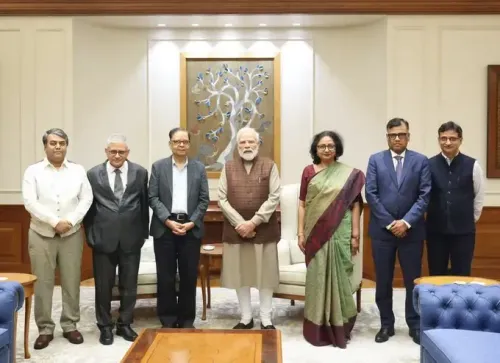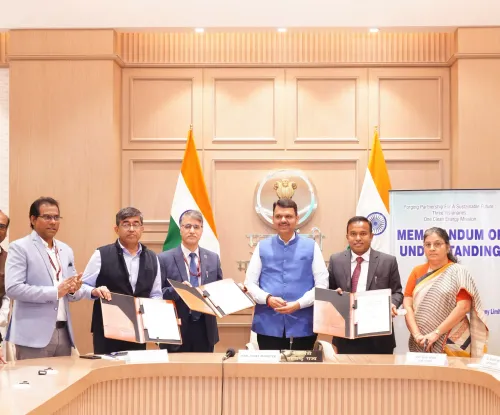Has Rabi Crop Sowing Surpassed 208 Lakh Hectares This Fiscal?

Synopsis
Key Takeaways
- Rabi crop sowing has surpassed 208 lakh hectares this fiscal.
- Area under Pulses has increased to 52.82 lakh hectares.
- Oilseed cultivation has exceeded 66.17 lakh hectares.
- Farmers are expected to benefit from Rs 84,263 crore due to rising MSP.
- Profit margins for wheat could reach 109 percent.
New Delhi, Nov 17 (NationPress) The sowing of Rabi crops has now surpassed 208 lakh hectares this fiscal year, as reported by the government on Monday (as of November 11).
The Ministry of Agriculture has indicated that the area under Pulses has reached 52.82 lakh hectares, an increase from 48.93 lakh hectares during the same timeframe last year.
Additionally, data reveals that 15.53 lakh hectares have been allocated for Shri Anna and Coarse Cereals, while the acreage for oilseeds has exceeded 66.17 lakh hectares.
In a previous announcement, the government projected that farmers could receive Rs 84,263 crore due to an increase in Minimum Support Prices (MSP) for various crops, with procurement estimates at 297 lakh metric tonnes for the upcoming rabi marketing season of 2026-27.
Since 2014-15, the payouts made to farmers from foodgrain purchases have surged from Rs 1.06 lakh crore to Rs 3.33 lakh crore in the period from July 2024 to June 2025. Meanwhile, procurement has risen from 761.40 lakh metric tonnes to 1,175 lakh metric tonnes, benefiting approximately 1.84 crore farmers, as stated in the official report.
Since the fiscal year 2018-19, the government has been consistently increasing MSPs for all mandated crops in accordance with the Union Budget 2018-19 guideline, which aims to ensure a minimum return of 50 percent over the all-India average cost of production for all crops.
The Cabinet approved the increase in MSP for all mandated Rabi Crops for the Marketing Season 2026-27 on October 1, 2025. Moreover, the MSP for mandated crops for the Kharif Marketing Season 2025-26 has also been raised to ensure fair prices for farmers.
For the Rabi marketing season 2026–27, the profit margins over the production cost peak at 109 percent for wheat.









